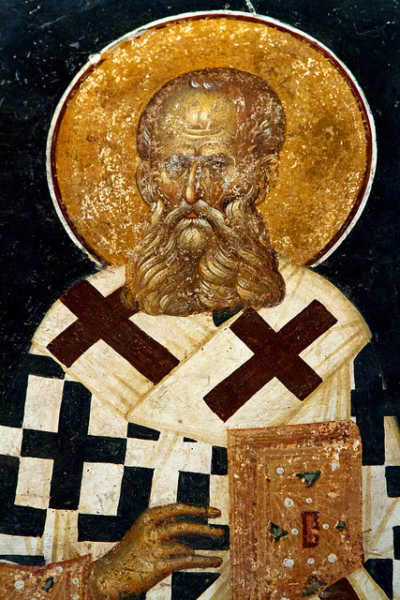We run our website the way we wished the whole internet worked: we provide high quality original content with no ads. We are funded solely by your direct support. Please consider supporting this project.

How the Church Fathers Read the OT
After the completion of the New Testament, the church fathers developed theology in their increasingly Gentile post-apostolic church in such a way that many of the distinctively Jewish features of the NT’s use of the OT diminished. However, this was not the case with regard to the Christocentric interpretation of the OT that was so central to how the NT writers interpreted the OT. As noted historian, Robert Wilken, has noted, the early church fathers didn’t consider the original meaning of OT passages to be altogether irrelevant, but they did consider it merely “preparatory” for the fuller meaning of passages that was unlocked when they were read in the light of Christ. The distinctly “Christian understanding” of Scripture was for them “oriented toward the living Christ revealed through the words of the Bible…”[1]
For these believers, writes Denis Farkasfalvy, “Jewish holy books function and are interpreted as documents of a Christ-centered salvation history with its full and true meaning apparent only in the light of the Church’s faith in Christ.”[2] Indeed, according to Claire McGinnis, “[n]ot only did the NT serve as the key to understanding the Old” for these fathers, but the uniform assumption of interpreters during this period was that “the books of the Old were about Christ.”[3] Following the precedent of the NT, these fathers understood Christ to be the fulfillment of fundamental OT motifs as well as of specific OT prophecies.
Following this precedent, these fathers relied on typological as well as allegorical interpretive strategies to discern Christ in the OT. It was by this means that Origen, Gregory of Nyssa, John Cassian and others were able to discern how violent portraits of God in the OT bore witness to Christ, as argued in The Crucifixion of the Warrior God.
By means of creative Christocentric interpretive strategies such as these, the Bible became for these interpreters “a vast field of interrelated words, all speaking about the same reality, the one God revealed in Christ,” as Wilken notes. The central goal of early Christian interpreters, he continues, was “to find Christ in surprising and unexpected places.” [4] And it was primarily by this means that the early Church was able to continue to embrace the OT as its own.
[1] R. L. Wilken, “Interpreting the Old Testament,” Isaiah: Interpreted by Early Christian and Medieval Commentators, trans. and ed. R. L. Wilken, A, R. Christman, and J. Hollerich; The Church’s Bible, xvii.
[2] Denis Farkasfalvy, Inspiration and Interpretation, 23.
[3] Claire McGinnis. “Stumbling over the Testaments: On Reading Patristic Exegesis and the Old Testament in Light of the New,” Journal of Theological Interpretation (April, 2010), 15-31.
[4] Wilken, “Interpreting the Old Testament,” xviii.
Photo credit: Nick in exsilio via Visual Hunt / CC BY-NC-SA
Category: General
Tags: Bible Interpretation, Church Fathers, Cruciform Theology
Related Reading

Yahweh as the Dark Knight
I recently received an interesting analogy for The Crucifixion of the Warrior God from Aaron Reini. Thank you Aaron! In the final scene of “The Dark Knight,” Batman and Commissioner Gordon are standing over Harvey Dent, whom everyone in Gotham City looks up to as a hero, but whom the Joker had turned into a…

Podcast: Does God Strike Jesus Down?
Greg looks at how Matthew uses the Old Testament—specifically, Matthew 26:31. http://traffic.libsyn.com/askgregboyd/Episode_0258.mp3

Podcast: Why Does Peter Say Lot Was a Righteous Man?
Greg ponders the moral judgements of Lot by Peter in light of Lot’s treatment of his daughters. http://traffic.libsyn.com/askgregboyd/Episode_0302.mp3

How NOT To Be Christ-Centered: A Review of God With Us – Part I
Theologians throughout Church history have used the concept of divine accommodation to account for everything in Scripture that seemed “unworthy” of God. Whatever didn’t line up with what we know about God was seen as God accommodating his revelation to our limited and fallen framework. The trouble is, theologians have, by and large, used the…

Podcast: Does the Cruciform Hermeneutic Sabotage Open Theism?
Greg plays Peek-a-Boo with God and considers whether those verses Open Theists use to support Open Theism might simply be times when God is accommodating for us. http://traffic.libsyn.com/askgregboyd/Episode_0236.mp3

Was the Early Church Pacifistic? A Response to Paul Copan (#11)
In Crucifixion of the Warrior God (CWG) I argue that Jesus and Paul instruct Christians to love and bless their enemies and to unconditionally refrain from violence (e.g. Matt 5:39-45; Rom 12:14-21). Moreover, I argue that this was the prevailing attitude of Christians prior to the fourth century when the Church aligned itself with the…
